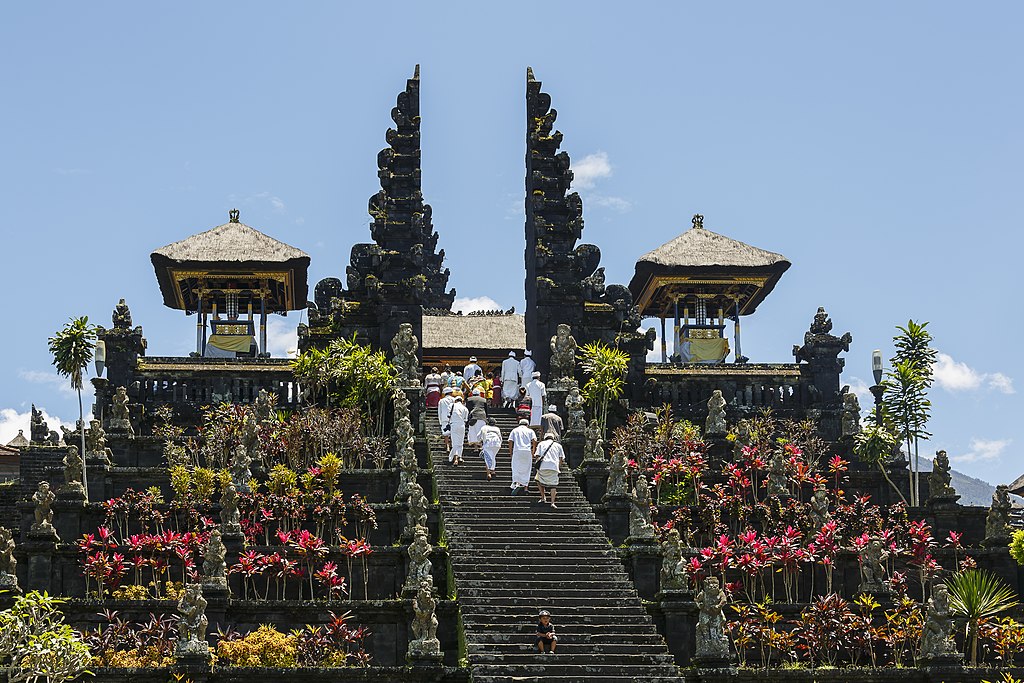Besakih Great Temple – Indonesia

Address
Besakih Great Temple Jl. Gunung Mas No.Ds, Besakih, Kec. Rendang, Kabupaten Karangasem, Bali 80863, Indonesia
Deity
Shiva, Vishnu, Brahma
Introduction
- Location: Besakih Temple complex is situated on the slopes of Mount Agung in eastern Bali, Indonesia.
- Significance: It is the most important and largest temple in Balinese Hinduism, often referred to as Bali’s “mother temple.”
- Complex Composition: The temple consists of at least 86 clan temples and shrines, with three main temples dedicated to the Hindu trinity:
- Pura Penataran Agung: Dedicated to Shiva (white banners).
- Pura Kiduling Kreteg: Dedicated to Brahma (red banners).
- Pura Batu Madeg: Dedicated to Vishnu (black banners).
Puranic Significance
- Ancient Origins: The temple’s roots likely date back to prehistoric times, with stone bases resembling megalithic stepped pyramids (over 2,000 years old).
- Historical Use: Used as a Hindu place of worship since at least 1284, becoming a state temple of the Gelgel dynasty by the 15th century.
- Temple Structure:
- Pura Penataran Agung is structured to represent seven layers of the universe.
- Pura Pasimpangan and Pura Pangubengan are located approximately three kilometers apart, with the latter offering great vistas near Mount Agung’s peak.
- Holy Water Source: Pura Batu Tirtha provides holy water for ceremonies at Pura Besakih.
- Symbolism of Direction: Four temples represent different forms of God at the cardinal points:
- North: Pura Batu Madeg
- South: Pura Kiduling Kreteg
- East: Pura Gelap
- West: Pura Ulun Kulkul
Special Features
- Complex Design: Comprises 23 temples on parallel ridges with stepped terraces and flights of stairs leading to the main sanctuary (Pura Penataran Agung).
- Main Sanctuary: The central focus is the lotus throne (padmasana), the ritual heart of the complex, dating back to the 17th century.
- Miraculous Survival: The temple complex survived the 1963 Mount Agung eruptions, which killed about 1,700 people, viewed as a miraculous sign from the gods.
Festivals
- Annual Celebrations: Over seventy festivals occur each year at the complex, with celebrations linked to almost every shrine.
- Pawukon Calendar: Festivals follow the 210-day Balinese Pawukon calendar year.
Century/Period/Age
2000 Years old
Managed By
Archaeological Survey of India (ASI)
Nearest Bus Station
Besakih
Nearest Railway Station
Karangasem
Nearest Airport
Ngurah Rai International Aiport




